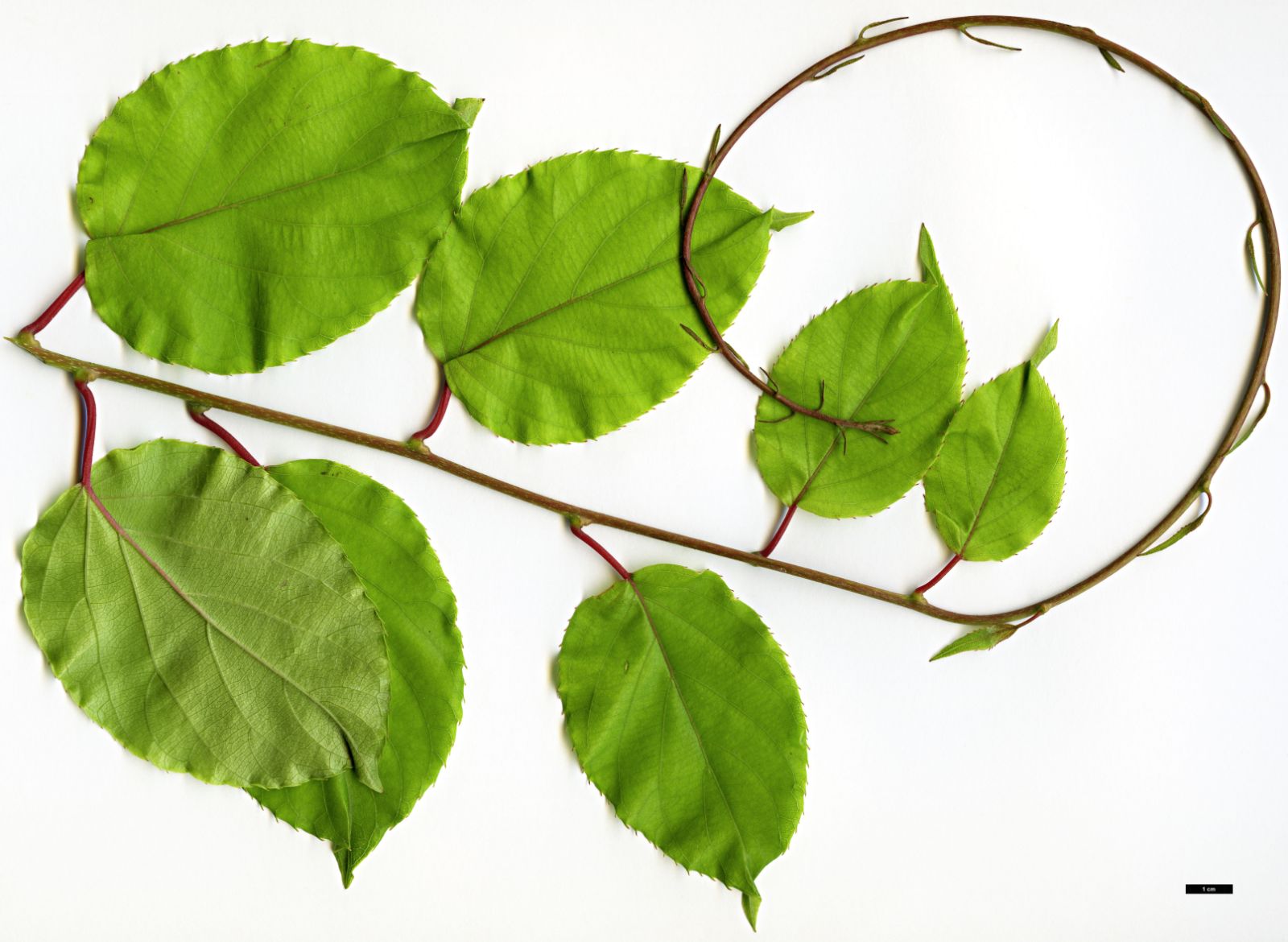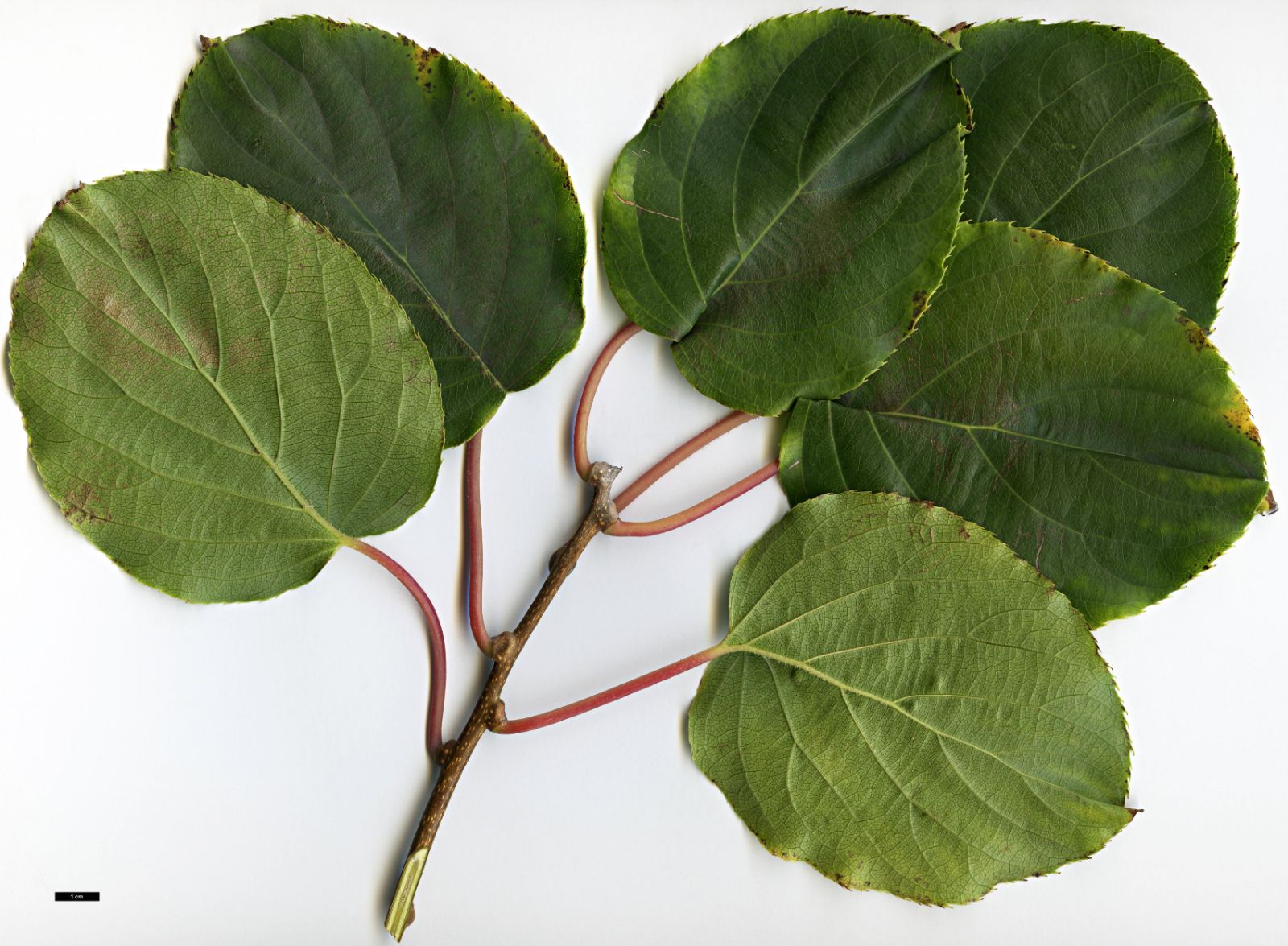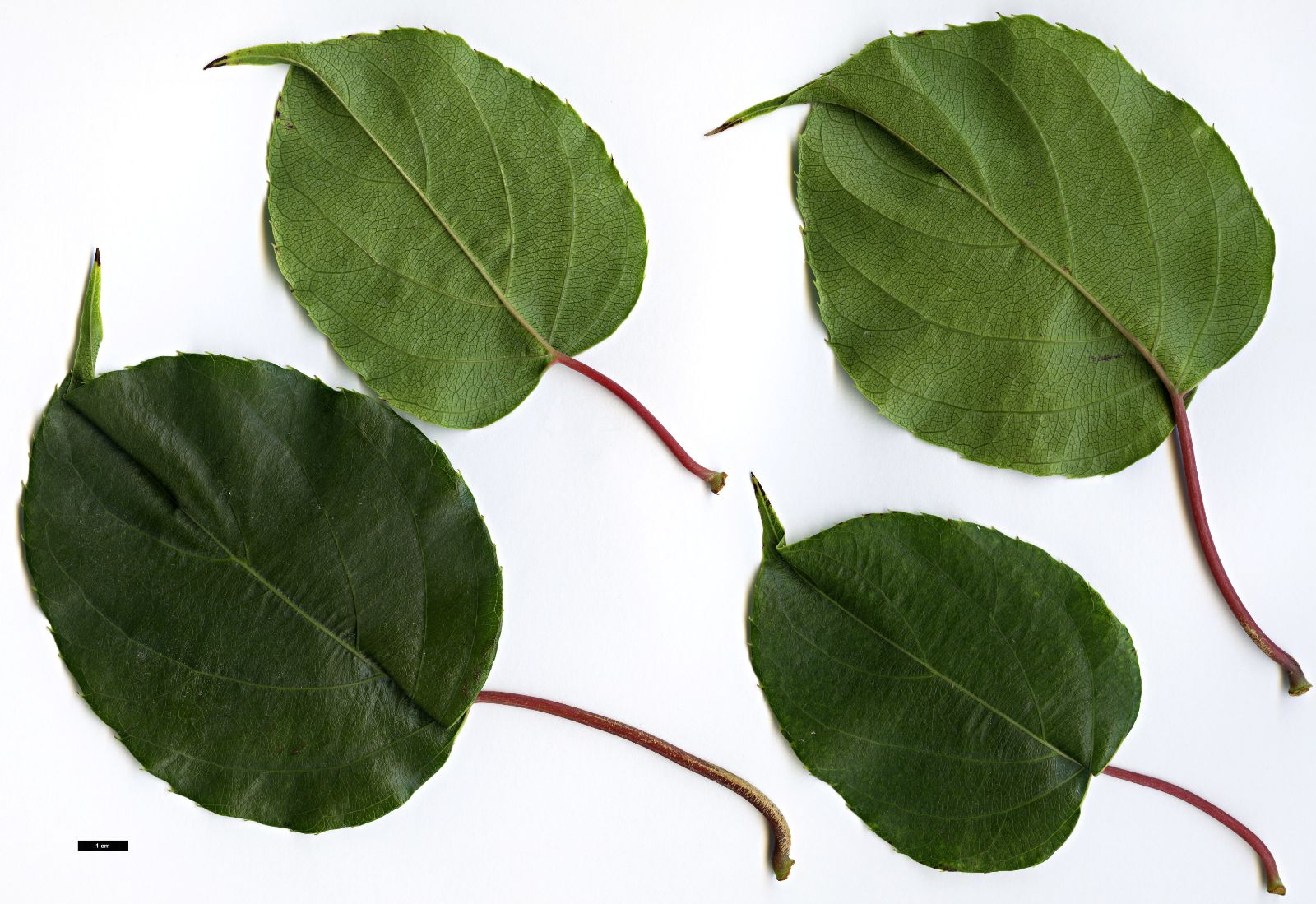Actinidia arguta
Credits
Article from Bean's Trees and Shrubs Hardy in the British Isles
Recommended citation
'Actinidia arguta' from the website Trees and Shrubs Online (treesandshrubsonline.
Genus
Synonyms
- Trochostigma arguta Sieb. & Zucc.
An exceptionally vigorous climber, reaching in its native haunts the tops of large trees. Leaves dark lustrous green, 3 to 5 in. long, sometimes nearly as wide; broadly ovate or ovate-oblong, edged with unequal bristle-like teeth, the base rounded or sometimes heart-shaped; almost glabrous except for down on the veins and in their axils; stalk rose-coloured, sometimes bristly, 11⁄2 to 3 in. long. Flowers fragrant, produced in the leaf-axils, usually in clusters of three; each flower 3⁄4 in. across, its stalk slender, and 1⁄2 to 3⁄4 in. long; sepals green, ovate-oblong, blunt; petals orbicular, white tinged with green, very concave and incurved, giving the flower a rather globular shape; stamens numerous, with dark purple anthers; the ovary has a short, stout style at the top of which about twenty stigmas radiate like the spokes of a wheel. Fruit an oblong, many-seeded, fleshy, greenish-yellow berry, nearly 1 in. long, with an insipid flavour, but eaten by the Japanese. Pith of young branches chambered. Bot. Mag., t. 7497 as A. polygama.
Native of China, Japan, and the Amur region. One of the strongest growing of the actinidias, this is also one of the hardiest. It flowers very well out-of-doors in numerous gardens in the south and west, and is hardy at Kew, flowering there in June and July. Although hermaphrodite as well as unisexual flowers are to be found on most plants, this species is effectively dioecious, a pollinator as well as a female plant being necessary if fruit is to be obtained.
A rufa (Sieb. & Zucc.) Planch.
Synonyms
A. arguta var. rufa (Sieb. & Zucc.) Maxim






